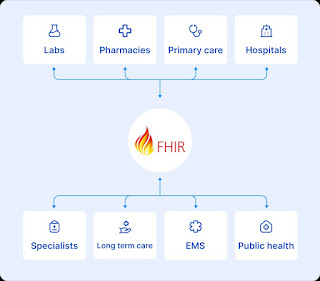Unlocking Seamless Healthcare Data Exchange with hapi fhir test server and fhir integration services
In today’s rapidly evolving healthcare ecosystem, interoperability is more than just a technological advantage — it’s an absolute necessity. Organizations striving to streamline data exchange, ensure compliance, and accelerate digital transformation must adopt robust solutions that facilitate smooth integration between diverse systems. That’s where the power of a hapi fhir test server and reliable fhir integration services comes into play.

The healthcare industry is flooded with disparate systems that often fail to communicate effectively. This lack of connectivity can lead to fragmented care, data silos, and compliance challenges. Implementing standards like FHIR (Fast Healthcare Interoperability Resources) helps bridge these gaps by offering a modern framework for data exchange. However, adopting FHIR standards isn’t simply about plugging in new software; it requires rigorous testing and dependable integration methods. A hapi fhir test server becomes an indispensable tool for developers and healthcare providers aiming to test FHIR APIs and workflows before deploying them in live environments. Equally important are the fhir integration services that ensure these workflows perform flawlessly across different systems and applications.
Developers often rely on open-source tools to build, test, and validate their FHIR implementations. The hapi fhir test server is widely regarded as a flexible and user-friendly option. It allows teams to simulate real-world scenarios, experiment with API requests, and verify that all resources comply with FHIR specifications. This sandbox environment not only minimizes the risk of costly errors during production but also accelerates the development cycle. By integrating this testing phase with comprehensive fhir integration services, organizations can guarantee that their systems deliver secure, reliable, and standards-compliant data exchange.
Healthcare providers and health tech companies understand that integration is an ongoing process. New standards, patient demands, and regulatory requirements continuously reshape the landscape. Without solid fhir integration services, even the best-tested solutions may falter when confronted with legacy systems or emerging technologies. These services handle complex tasks like mapping data between older formats and FHIR resources, ensuring secure API connections, and maintaining interoperability between cloud and on-premises applications. Together with a hapi fhir test server, they create a robust foundation for sustainable digital health innovation.
What makes this combination so effective is its ability to scale alongside an organization’s needs. As patient volumes grow and more systems come online, the pressure on data exchange infrastructure increases. A properly configured hapi fhir test server lets developers proactively identify performance bottlenecks and resolve them early. Meanwhile, expert fhir integration services help keep everything connected, updated, and compliant with ever-changing health IT regulations. This synergy ensures that healthcare providers can focus more on patient care and less on troubleshooting technical hurdles.
One of the key advantages of leveraging a dedicated test environment is the freedom it provides developers and IT teams. They can safely trial new features, run regression tests, and validate security measures without disrupting live operations. The hapi fhir test server offers flexibility in configuration, making it suitable for small pilot projects as well as enterprise-grade rollouts. When paired with robust fhir integration services, the transition from development to production becomes smoother, faster, and more reliable.
Choosing the right solutions for testing and integration is essential for future-proofing any digital health initiative. As cloud adoption rises, so does the need for secure, scalable interoperability tools that support hybrid infrastructures. Solutions like Whitefox.cloud exemplify how cloud platforms can support developers with accessible environments and powerful integration frameworks. By using such resources wisely, organizations can stay ahead of the curve, reduce deployment risks, and meet the highest standards of data privacy and patient safety.
In the end, building a connected healthcare ecosystem depends on the seamless coordination of modern standards, robust testing, and reliable integration. The combined power of a hapi fhir test server and specialized fhir integration services ensures that health data flows securely and efficiently between systems. As the healthcare landscape continues to evolve, forward-thinking organizations that prioritize interoperability will be best positioned to deliver better patient outcomes, innovate faster, and maintain regulatory compliance in an increasingly digital world.
With the right tools and expertise, achieving this level of interoperability is not just possible — it’s within reach for every healthcare organization ready to take the next step toward a more connected future.


Comments
Post a Comment